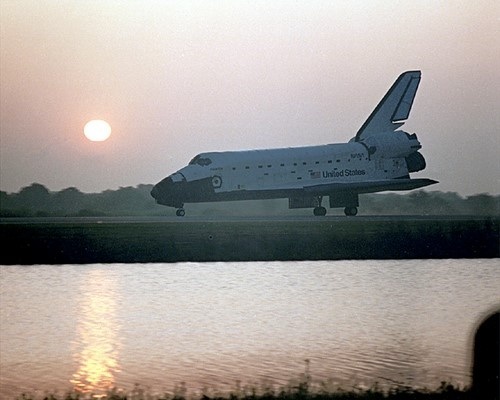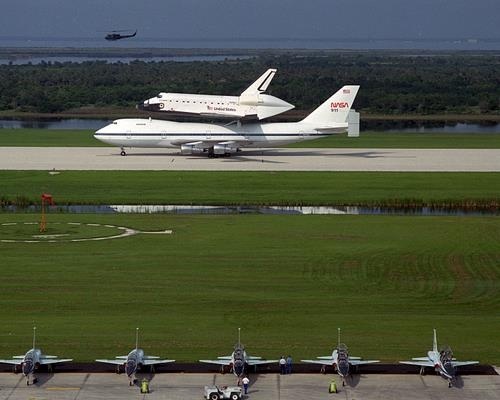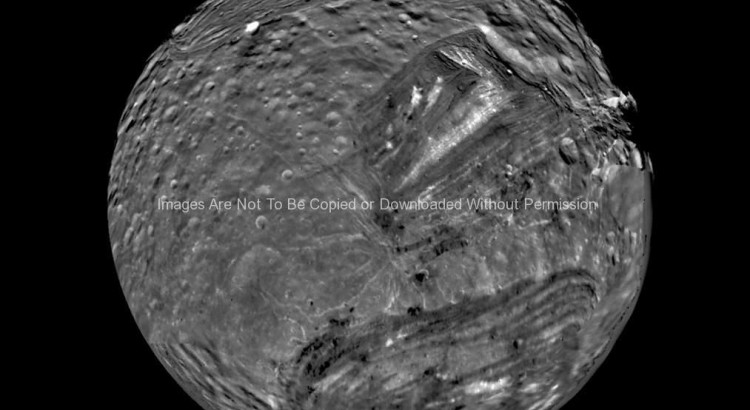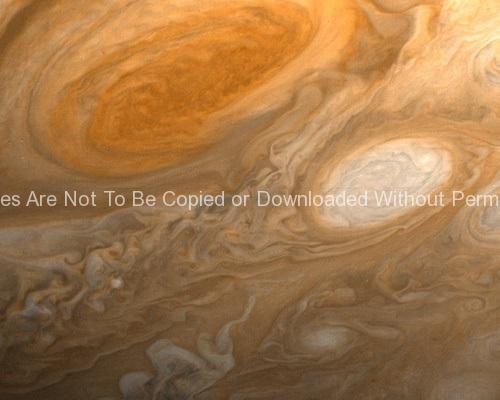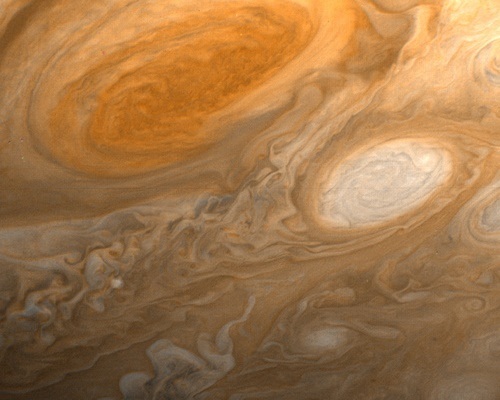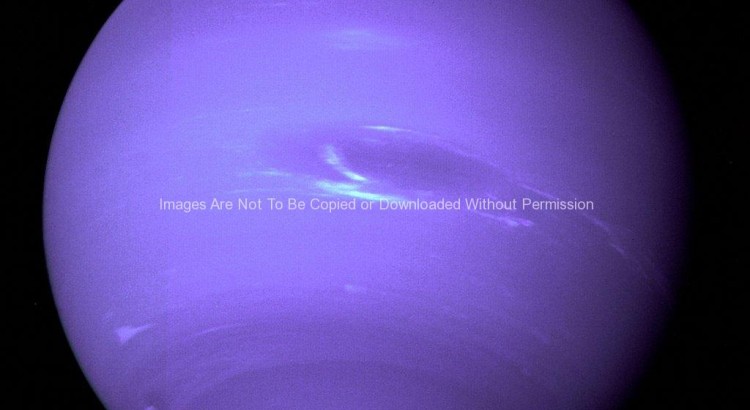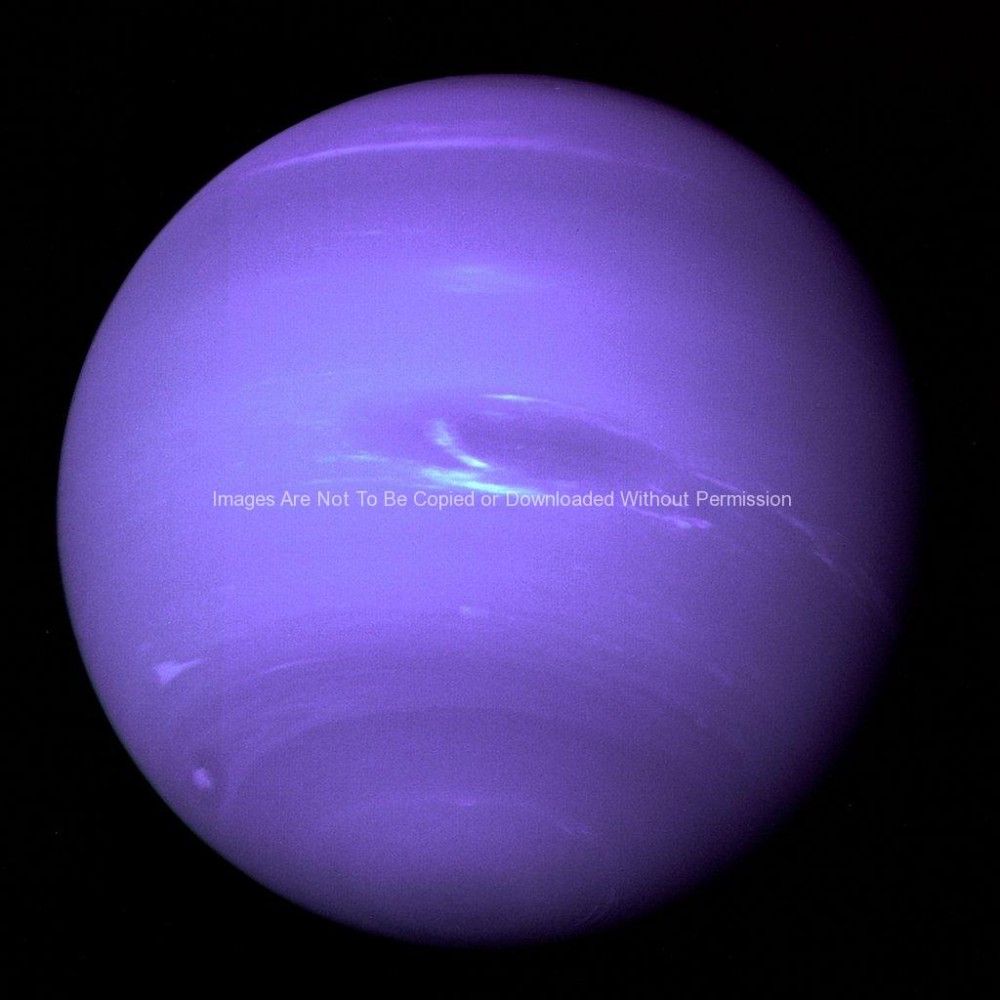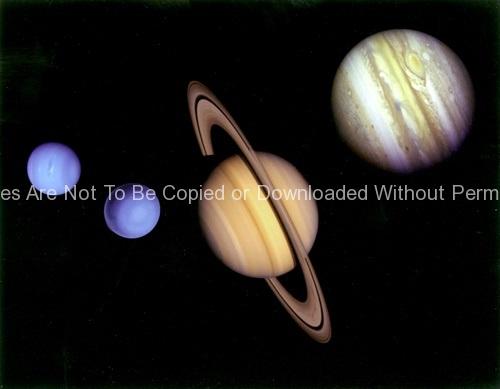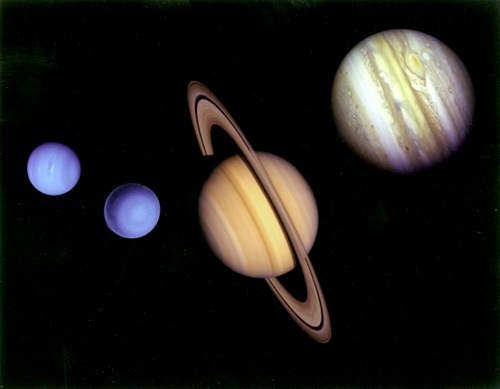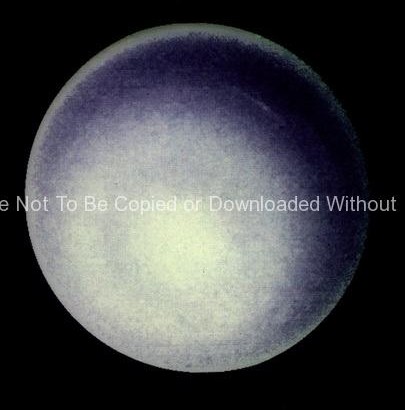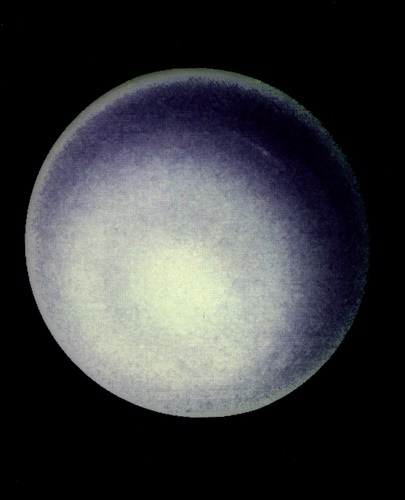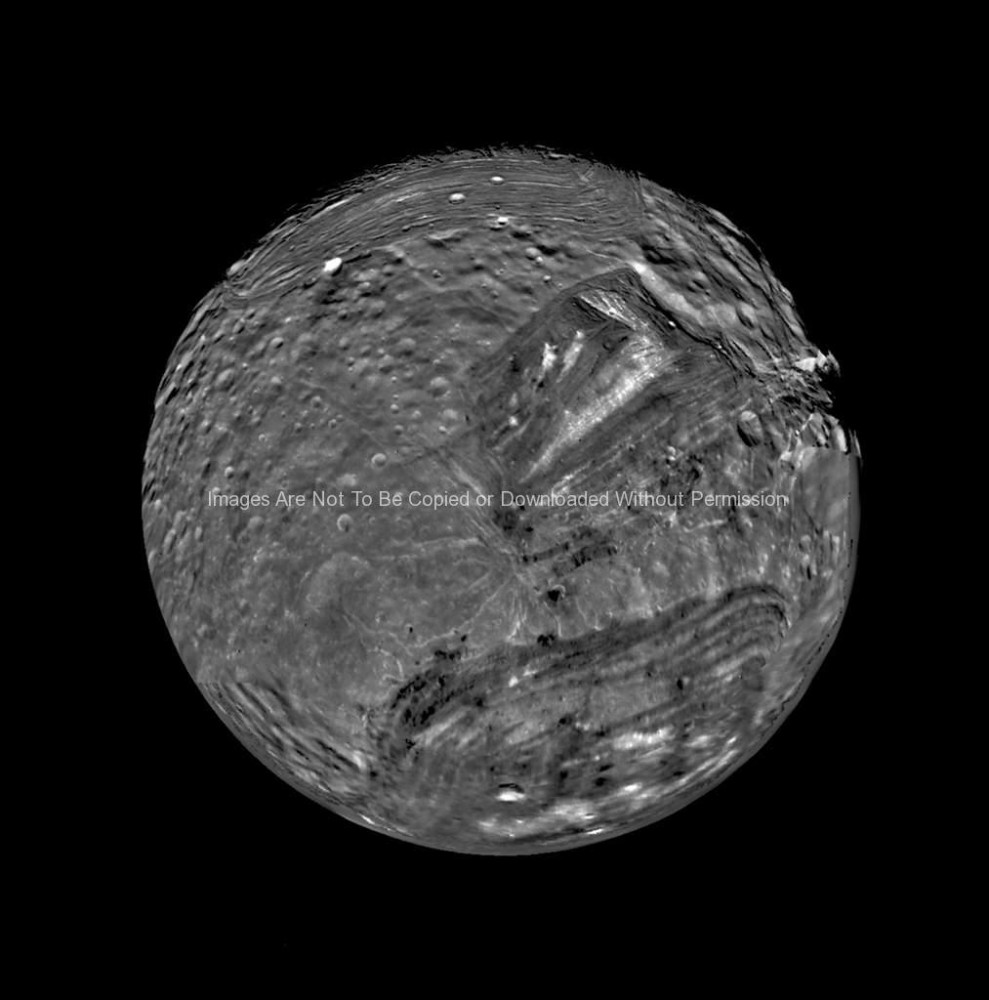
NASA Stock Photos – Flying by in early 1986, Voyager 2 captured this picture of Miranda, which enabled scientists to study this moon of Uranus in much greater detail than ever before. Discovered in 1948 by Gerard Peter Kuiper, Miranda is named for the daughter of the wily Prospero in Shakespeare’s “The Tempest.” It is the eleventh known satellite of Uranus and the innermost large moon of Uranus It was necessary that Voyager 2 passed by Miranda, not for scientific reasons, but simply for the gravity assist it needed to go on to Neptune. Due to the position of the entire Solar System, Miranda provided the energy to throw Voyager 2 to Neptune. Before Voyager, Miranda was largely ignored as it is not the largest moon and did not seem to have any other outstanding qualities. Fortunately, however, Voyager passed close enough to Miranda to provide scientists with fascinating photographs that captivated astronomers. About half ice and half rock, Miranda’s surface has terraced layers that indicate both older and new surfaces coexisting. Since the mixing of ancient and recent surfaces is rare in planetary geology, scientists have postulated two explanations for the different ages of the numerous valleys and cliffs on Miranda. One theory is that Miranda could have shattered as many as five times and was then reassembled. Another hypothesis is that partly melted ice upwells forced new surfaces to emerge.
